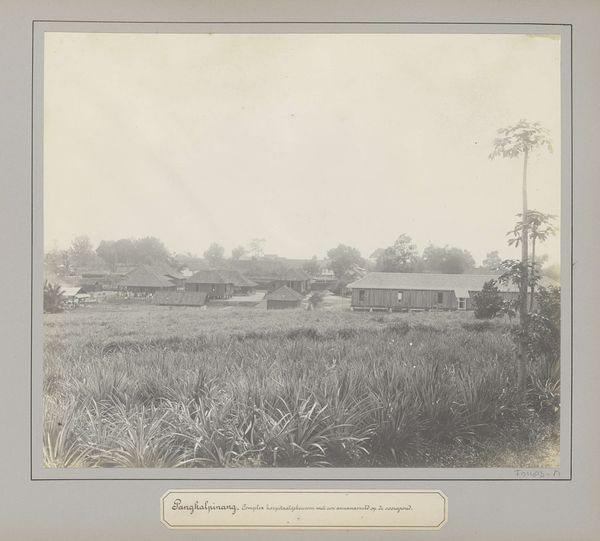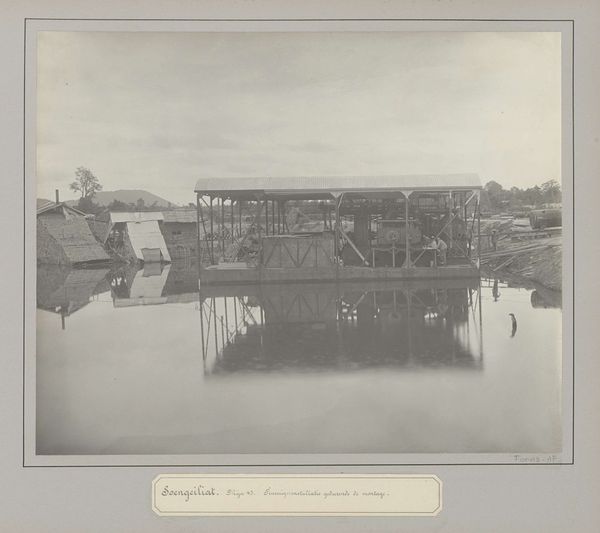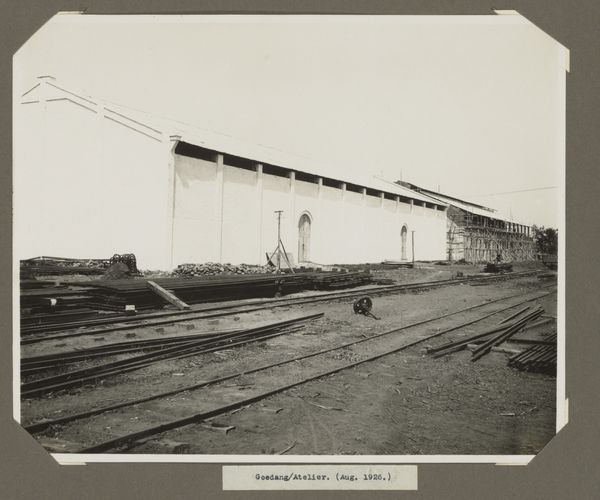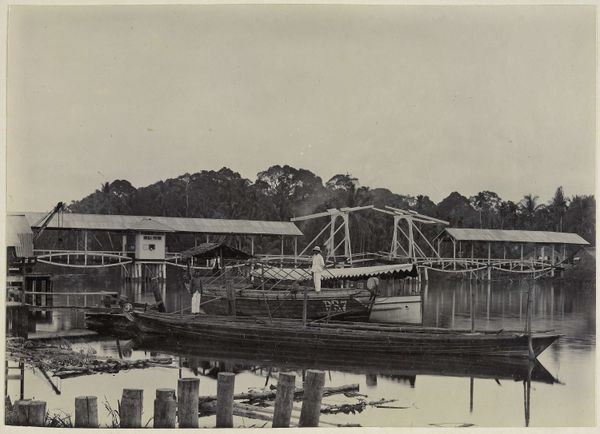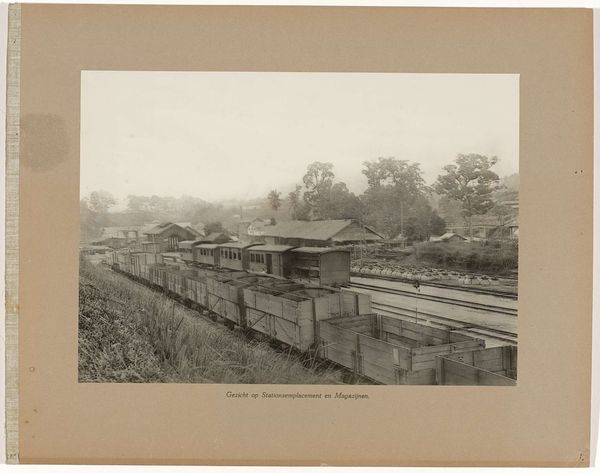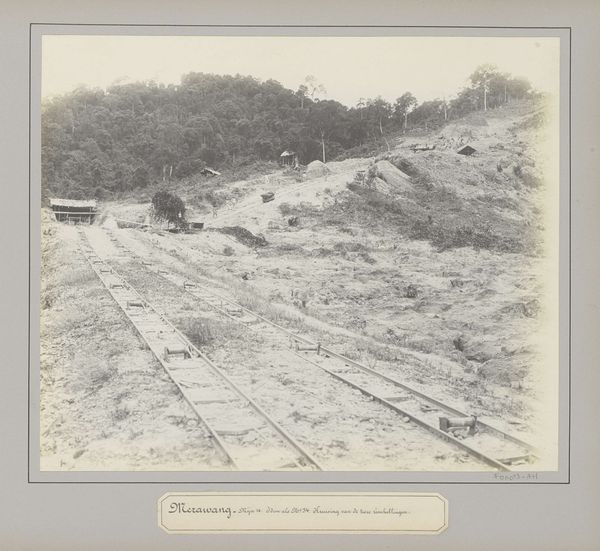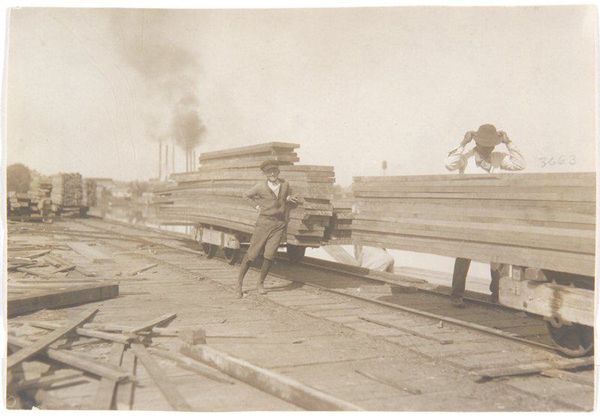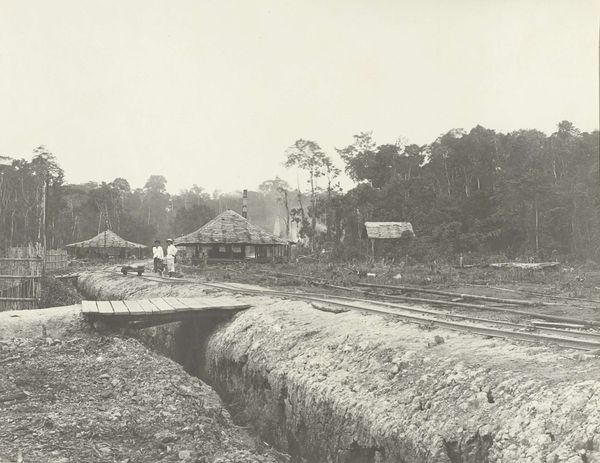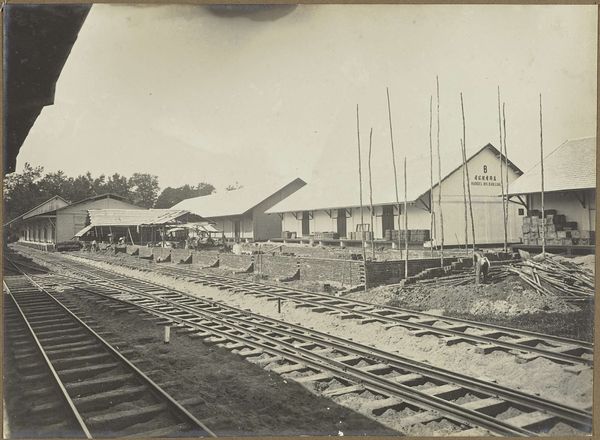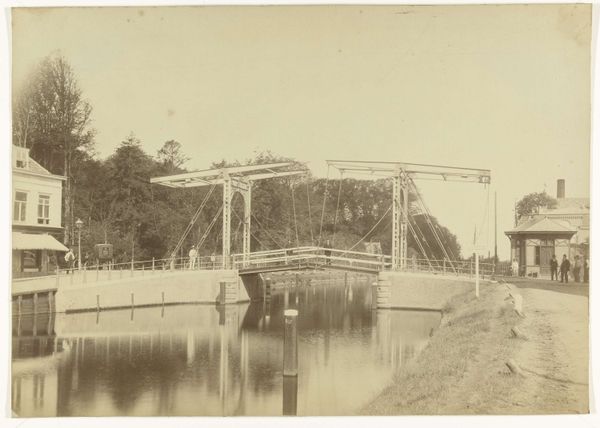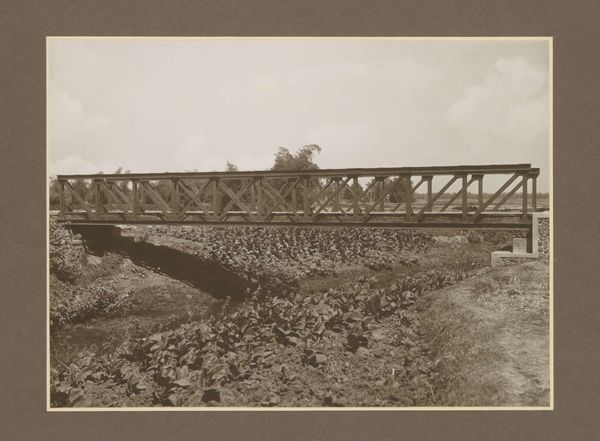
Kade met kranen en boten bij een tinonderneming te Belinyu c. 1900 - 1920
0:00
0:00
anonymous
Rijksmuseum
photography, gelatin-silver-print
#
landscape
#
archive photography
#
photography
#
orientalism
#
gelatin-silver-print
#
19th century
Dimensions: height 240 mm, width 285 mm
Copyright: Rijks Museum: Open Domain
Editor: This photograph, “Kade met kranen en boten bij een tinonderneming te Belinyu,” gelatin silver print made around 1900-1920, depicts a port scene; it feels very documentary, focusing on the industrial apparatus more than anything else. What can you tell me about it? Curator: The photograph's primary value lies in its documentation of tin mining infrastructure. Look closely at the cranes, the boats, and even the stacked materials. These aren't simply objects, but products of labor and resources extracted from the land. Editor: So, you're saying it's less about the aesthetic value and more about what it represents materially? Curator: Precisely. Consider the labor involved in building that infrastructure and extracting the tin. What does the photo tell us about the social context of this industrial activity? Whose labor is visible and whose is not? Think about who owned this business, who profited, and who worked there, often under what conditions. The colonial enterprise depended heavily on resource extraction, making works such as this significant for analysis beyond its surface representation. Editor: That makes me look at it totally differently! I was so focused on the scene, but now I realize the materials tell a much bigger story about industry, labor, and even colonialism. Curator: Exactly! Seeing art through the lens of materials can reveal hidden power dynamics and historical realities. The photographic process itself is also key – gelatin silver prints were a common means of distributing these images. Editor: So, it becomes another layer of materials adding to the overall meaning! Thank you. I see so much more here now.
Comments
No comments
Be the first to comment and join the conversation on the ultimate creative platform.
